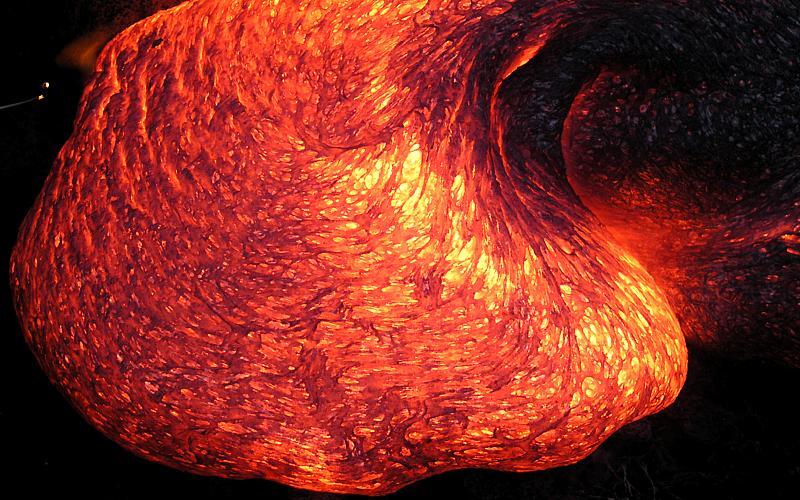Toe of lava moving fairly rapidly down moderate slope along edge of Kohola flow. Note that lava moves more rapidly at top than at base of toe, in contrast to lava in video for March 1, which was moving across nearly flat ground. Note also developing wrinkles in moving crust.
Photo and Video Chronology - Kīlauea - March 6, 2003
More breakouts in Kohola flow
Get Our News
These items are in the RSS feed format (Really Simple Syndication) based on categories such as topics, locations, and more. You can install and RSS reader browser extension, software, or use a third-party service to receive immediate news updates depending on the feed that you have added. If you click the feed links below, they may look strange because they are simply XML code. An RSS reader can easily read this code and push out a notification to you when something new is posted to our site.











